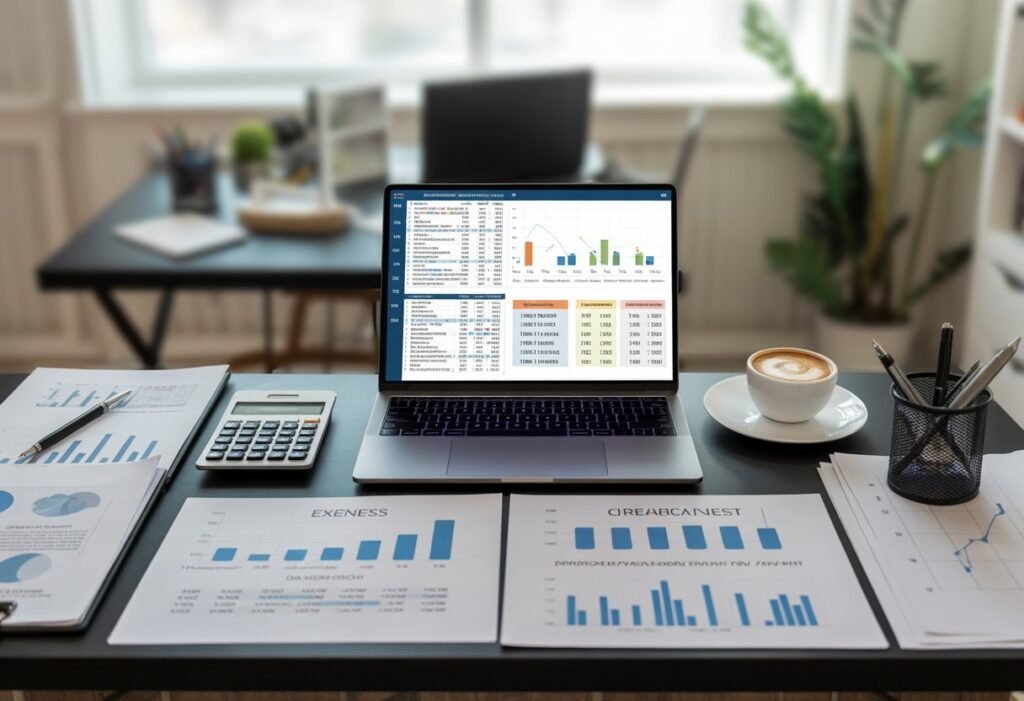The BRRRR method can help you scale your real estate portfolio quickly, but understanding all the expenses involved is crucial to your long-term success. You must include every core expense in your cash flow analysis to avoid overestimating your returns or encountering financial surprises down the road. From mortgage payments and property taxes to insurance, maintenance, vacancies, and capital expenditures, each cost plays a vital role in your rental property’s profitability.
By knowing exactly which expenses to factor in, you can identify solid investment opportunities and protect your bottom line. This way, your BRRRR strategy will be based on real numbers—not just hopes or estimates. If you want to consistently grow your rental property investment returns, being thorough about expenses is the key.
Key Takeaways
- Accurate cash flow analysis requires including all operational and ownership expenses.
- Overlooking costs can lead to false profit expectations and costly mistakes.
- Careful expense tracking improves the reliability of your BRRRR investment strategy.
Core Expenses to Include in BRRRR Cash Flow Analysis

Accurate cash flow analysis is essential for BRRRR investors who want to ensure their rental properties generate positive returns. When calculating cash flow, it’s important to account for all core expenses tied to both the purchase and ongoing ownership of your investment.
Mortgage Payments
Your monthly mortgage payment is typically the largest recurring expense for a BRRRR property. This payment covers principal and interest based on the loan terms you secure during the refinance process. The amount will depend on your loan balance after the rehab and type of loan product, such as a conventional or cash-out refinance.
Lenders may also bundle property taxes and insurance into this monthly payment if you escrow those costs. You can use online tools like the BRRRR calculator to help model these numbers before you finalize financing. Make sure to include any private mortgage insurance (PMI) if your down payment or new loan-to-value ratio requires it. Failing to factor in the full mortgage payment can seriously misestimate your actual cash flow.
Property Taxes and Insurance
Every BRRRR property will come with property taxes assessed by the local government. Tax rates vary widely by location, so confirm the annual tax bill based on current property assessments and projected after-repair value. Don’t overlook supplemental tax bills that may be issued after a significant rehab or reassessment.
Insurance is another fixed cost, required by your lender. You’ll need landlord or rental property coverage, typically more expensive than a standard homeowner policy. Extra liability or umbrella insurance may be needed based on your risk tolerance and portfolio size. Track both property taxes and insurance premiums to assess your true cash flow and avoid sudden funding shortfalls.
Property Management Fees
If you choose to hire a property manager, their fees directly affect monthly profit. Property management companies usually charge between 8% and 12% of gross rental income. Some also charge a leasing fee for placing new tenants or an annual renewal fee.
Ask if maintenance coordination or bill pay is included, as some firms add costs for those services. For self-managed properties, budget your time and possible additional admin expenses. Clear management expenses help you avoid underestimating your costs and ensure your estimated cash flow is realistic for your investment goals.
Utilities and Operating Expenses
Utilities and operating expenses can quickly erode your rental income if not tracked and budgeted accurately. Typical utilities might include water, sewer, trash, electric, and gas, depending on local practices and what’s covered by your lease. In some markets, tenants pay certain utilities, while in others, the owner pays everything.
Operating expenses also cover regular maintenance costs, landscaping, repairs, pest control, and cleaning between tenants. Set aside funds for ongoing maintenance and larger capital expenditures, such as roof replacement or HVAC repairs, to prevent unexpected cash flow problems. Accurate estimates of these expenses ensure you have a clear picture of your property’s profitability.
Additional Considerations for Accurate ROI Calculation

Detailed cash flow analysis is vital for calculating return on investment (ROI) when using the BRRRR strategy. Overlooking key cost factors or market trends can distort your actual profitability and long-term cash-on-cash return.
Capital Expenditures and Maintenance Reserves
Capital expenditures (CapEx) cover significant repairs or replacements, such as HVAC systems, roofs, windows, or appliances. These major outlays do not occur every year, but you still need to budget for them to ensure steady net operating income (NOI) and prevent unexpected cash shortfalls.
Setting aside a monthly reserve minimizes financial surprises. Many investors allocate 5%–15% of gross rental income to CapEx and maintenance reserves, depending on property age and condition. Detailed records help you anticipate future costs and improve your rental property calculator projections, improving your accuracy when estimating ROI and cash-on-cash return.
Including maintenance and CapEx in your cash flow calculation paints a realistic picture of profitability, rather than showing inflated figures that ignore the true cost of ownership.
Vacancy Allowance and Tenant Turnover
No property is leased 100% of the time. Factoring in a vacancy allowance adjusts your cash flow for expected rental gaps caused by tenant turnover, non-payment, or periods spent finding reliable tenants. Many real estate investors use 5%–8% of gross rents as an average vacancy rate, though this varies by local rental demand.
Turnover also incurs direct costs: advertising, cleaning, repairs, and leasing commissions. You should set aside funds for these events and build them into your expense assumptions rather than hoping every lease is immediately renewed. Accurately tracking vacancy and turnover costs helps ensure your cap rate and cash flow are based on actual investment performance.
Both regular vacancy and turnover costs directly impact your cash-on-cash return (CoCR) and your ability to build wealth through passive income.
Market Analysis and Value Fluctuations
Real estate markets are dynamic. Market analysis guides your understanding of after-repair value (ARV), area rent levels, and the potential appreciation of undervalued or distressed properties. Assessing local trends helps ensure you are using accurate numbers for both immediate cash flow and future equity.
Value fluctuations—driven by economic cycles, local job growth, or shifts in rental demand—can change the profitability of your investment. Regular due diligence is essential: consult recent sales data, a seasoned real estate agent, or market analytics platforms to verify your assumptions.
Monitoring the broader market allows you to adjust your 1% rule, 70% rule, and cap rate calculations over time, protecting your portfolio against volatility while ensuring ROI estimates remain as close to reality as possible.
Frequently Asked Questions

To accurately analyze cash flow for BRRRR properties, you need to understand the full range of expenses and how they affect your returns. This section addresses questions about operating costs, financing, management fees, capital expenditures, and tax issues specific to the BRRRR strategy.
What are the typical operating expenses one should account for in a BRRRR cash flow analysis?
You should include property taxes, insurance, repairs, maintenance, utilities (if not tenant-paid), and homeowner association (HOA) fees. Set aside reserves for vacancy and bad debt, as rental income is not always guaranteed. Budgeting for these costs helps determine reliable monthly cash flow.
How do you calculate cash-on-cash return in BRRRR investments?
To calculate cash-on-cash return, divide your annual pre-tax cash flow by your total cash invested, including down payment, rehab costs, closing costs, and any initial holding costs. This formula gives you a clear percentage that reflects your actual out-of-pocket return. The BRRRR method typically aims to maximize this metric.
Which financing costs should be considered when analyzing cash flow in the BRRRR method?
Account for loan origination fees, appraisal fees, lender-required points, interest payments, and private mortgage insurance (PMI) if applicable. Ongoing monthly mortgage payments, including principal and interest, are a primary recurring expense. Refinancing costs should also be factored into your financial model.
What is the role of capital expenditures in BRRRR cash flow calculations?
Capital expenditures (CapEx) refer to major property improvements or replacements, such as HVAC systems, roofs, or appliances. Since these costs occur periodically, allocate a monthly amount in your cash flow analysis based on estimated useful life and replacement costs. This ensures long-term financial stability and avoids unexpected cash drains.
How are property management fees handled in BRRRR analysis?
If you hire a property manager, include their fees—typically a percentage of collected rent—when estimating your net cash flow. Even if you self-manage, it is wise to budget for management costs for a more accurate and scalable analysis. This gives you a clearer picture of true operating expenses.
What are the tax implications to consider in a BRRRR rental property cash flow forecast?
Your taxable rental income is affected by depreciation, mortgage interest deductions, property taxes, and allowable expenses. Calculating cash flow should include an estimate of your effective tax rate after applying these deductions. Consult a tax professional to address specifics and optimize your BRRRR property’s after-tax returns.
Tired of second-guessing your investment numbers?
Learn how to find profitable real estate deals.
Get instant access to professional-grade property analysis tools from DealCheck.io and start evaluating properties in minutes!
Enter the code BESTDEAL at check out and receive a 20% Off Discount!

Master the art of real estate investing with The Real Estate Property Management Guide: Premium Edition – your comprehensive roadmap to successful property management.
Whether you’re a novice investor or seasoned professional, this guide covers everything from selecting the right investment properties to tenant management and property marketing.
The author, Jeff Rohde writing as Jeffrey Roark, is a professional with over 25 years of real estate experience. This Premium Edition includes the valuable bonus book Investment Real Estate Analysis: A Case Study to help you identify hidden opportunities and evaluate properties like a professional.
Learn practical, actionable strategies for both residential and commercial properties, from single-family homes to office buildings and shopping centers.
Don’t just buy property – learn how to manage it successfully and maximize your investment potential.
Grab your copy now from your favorite bookseller:
- Amazon (Basic Edition, does not include Investment Real Estate Analysis: A Case Study)
- Books2Read for Apple, Barnes & Noble, Kobo, Scribed, and 8 more sellers with both eBook and paperback options available ((Premium Edition, includes Investment Real Estate Analysis: A Case Study)
- Payhip as a downloadable PDF (Premium Edition)





